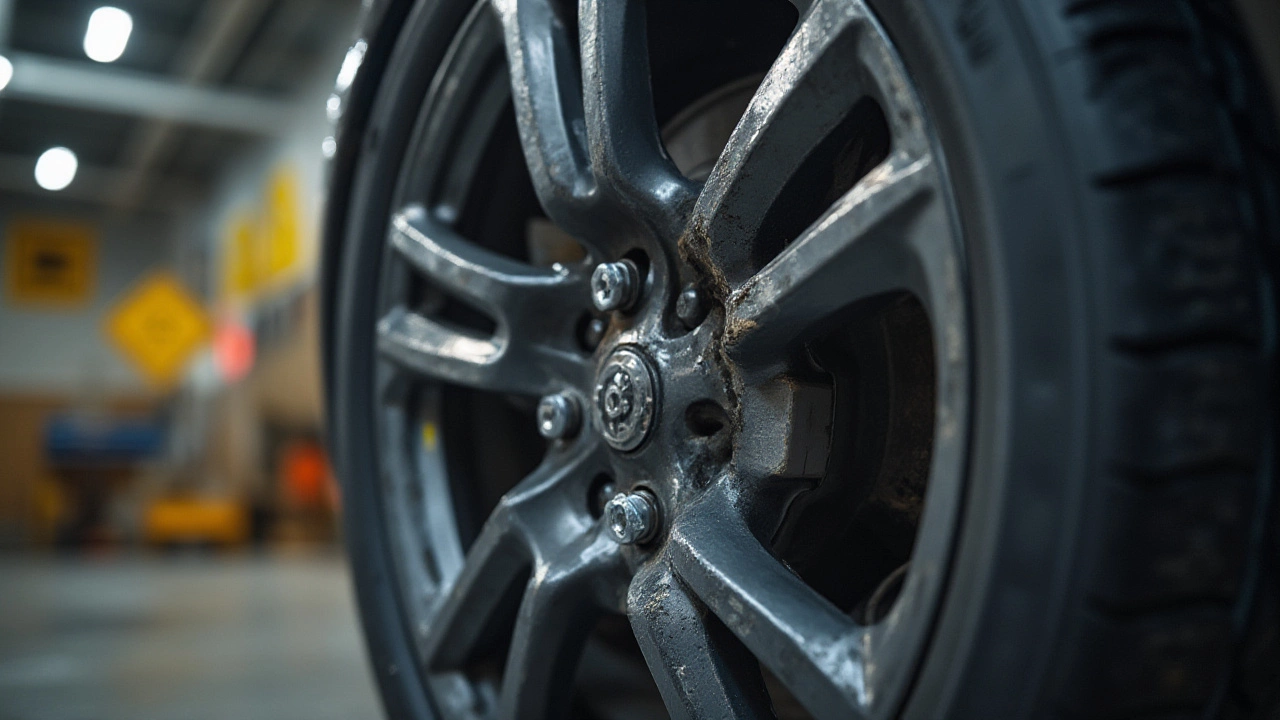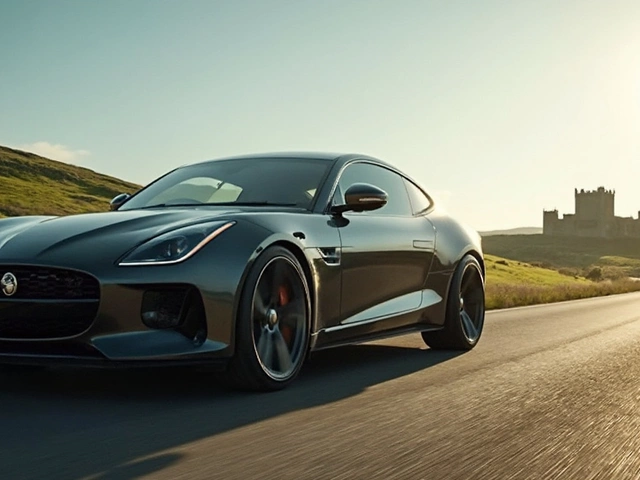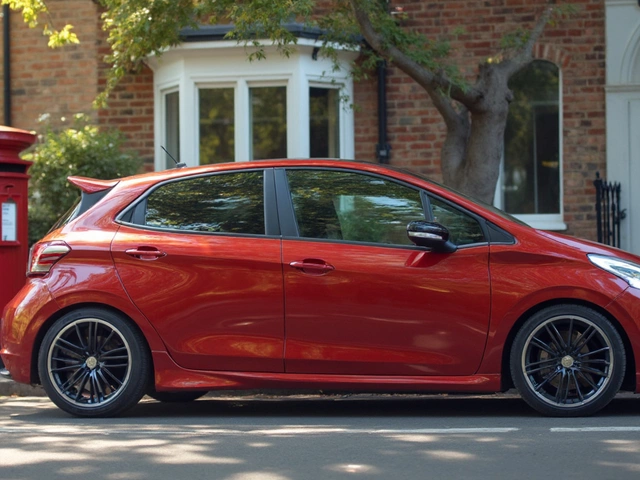Pop open any car forum and you'll find heated debates about wheel spacers. Plenty of car owners want that tough, wider stance, but some mechanics warn spacers are a lousy shortcut. What's really going on? Spacers have earned their reputation for good reasons, and once you take a closer look, it's hard not to see why many experts say to steer clear of them.
What Wheel Spacers Really Do—and Why People Want Them
If you’ve ever sat in rush hour traffic and admired a car with wheels pushed snug to the arches, chances are spacers played a part. Wheel spacers are cleverly simple: just round metal discs that push your wheels farther from the car’s hub. People love them mostly because they make cars look more aggressive and allow you to fit wheels or tires that wouldn’t clear otherwise.
Motorsport and stance culture gave spacers their moment in the spotlight, letting stock wheels fill wider guards for a beefier look. Some even install spacers to fit bigger brake kits that standard wheels rub against. But every time you add something between the wheel and the hub, you change a whole bunch of things—some of which can get ugly, fast.
It might not look like much, but those few extra millimeters create a cascade of issues. A study from the Society of Automotive Engineers (SAE) found that even 5mm of extra wheel offset can raise suspension loads by 10% or more. That means, the higher you stack those spacers, the more strain and leverage you put on your car’s components that weren’t designed for this geometry in the first place.
Handling, Safety, and Wear: The Downside No One Wants to Admit
The number one reason pros are wary of spacers? Safety. Once you’ve added spacers, you change how forces are transferred between your wheels and axles. Now, every time you hit a bump or corner hard, all that force is further out from the original design point. Think of holding a weight at arm’s length instead of close to your chest—much harder, right?
This extra leverage can loosen wheel bolts, increase the risk of shearing studs, and wear out bearings way faster. A 2022 test by EuroTest Automotive in Germany showed that cars with 15mm or thicker spacers wore out outer wheel bearings up to 40% quicker than identical cars without spacers over a 20,000 km simulated drive.
It's not just mechanical parts that suffer. Spacers can upset handling, too. Increase track width on one axle only, and the car can feel jittery, especially at high speed. The extra turning radius can make steering feel less precise. The car might even start to tramline—following cracks in the road—making it a handful, especially on bumpy Melbourne roads or gravel down the Peninsula.
Let’s talk about safety. Most critical—especially for highway speeds—are the risks of bolts working loose. The longer the wheel lugs need to be, the more critical perfect torque is. Aftermarket spacers often require extended studs or bolts. Miss a torque check and, in the worst-case scenario, you’re dealing with a wheel coming off. In the last five years, Australia’s TAC (Transport Accident Commission) noted at least 20 crashes directly tied to incorrectly installed or poor quality wheel spacers.
Legal Headaches: Aussie Rules and Insurance Nightmares
This is Australia, not Japan or the US. Local laws aren’t messing around when it comes to modifications—especially safety-related ones like spacers. In Victoria, fitting any kind of aftermarket spacer is illegal for public road use unless the car’s certification lists them. That means most spacers void your insurance on the spot if you’re caught in a smash. In NSW and QLD, it’s the same deal. Illegal mods mean insurance providers love to walk away when it’s claim time.
Those who argue they 'just use spacers for show' forget that any drive on public roads—even a milk run—means they’re risking fines, defect notices, or even loss of registration. And good luck getting your insurer to cough up if they find spacers in a post-crash inspection. Some insurers, like RACV and NRMA, have official statements refusing coverage for modified suspension especially with wheel spacers. It's just not worth the risk for something so cosmetic.
If you check the Victorian Roadworthiness Guidelines, there’s a specific note: 'Spacers or adaptors between the wheel and axle hub are not permitted unless OE-fit or certified.' That’s a big, official 'no.'

Common Myths and Internet Wisdom: Truth or Hype?
Scroll through any car modding group and you’ll hear 'Spacers are fine if you use quality parts and torque them right.' Sounds reasonable, right? But plenty of spacer fails still happen even with expensive parts and careful installs. The truth is, even the best spacer’s still introducing all those leverage and wear problems.
Another myth: 'Race cars use spacers all the time!' Sure, some do, but race cars get stripped down and rebuilt between events. They also get daily safety checks and use top-shelf hardware torqued to perfection. On the street, few people actually re-torque lugs every week or after every big pothole.
There’s also a weird belief that wheel spacers are a cheap fix for fitting the wrong wheels. In reality, most performance shops would rather source wheels with the right offset to start with. And while a set of spacers can cost $100-$400, undoing bearing or stud damage can cost much more—especially if you add up multiple parts and labour hours. Why cheap out on the parts that literally connect your car to the road?
When Spacers are Unavoidable: Tips and Safe Alternatives
There are rare cases when spacers might be the only answer. For example, owners fitting specialist brake upgrades on classic Porsches, old Japanese imports, or one-off builds. Even then, you need to go with precision-machined, hub-centric spacers (not the cheap universal ones), use extended, high-strength wheel studs, and follow exact torque specs.
If you don’t want the spacer risk, it’s smarter to buy wheels with the correct offset or order custom-width wheels. Major brands like Enkei, Work, or BBS offer offset choices that fit perfectly with most brake upgrades or fender mods. Sure, it might be more hassle at first, but you skip the safety dramas and insurance headaches down the track.
If road safety matters (and it should), remember you can always:
- Run wheels with the right offset and width for your car.
- Ask your tyre shop to check load ratings on wheels before fitting.
- Stick to OE (original equipment) spec parts for peace of mind.
- Keep a regular torque-check schedule if running any unusual setup—never trust that it’s 'just fine.'
Every few years, there's a fresh batch of 'race-inspired' spacers marketed online as perfectly safe. But even at the 2023 Auto Salon in Melbourne, three different local race teams admitted they never touch spacers for endurance—too much risk of DNF (Did Not Finish) from a simple part failure.
Technical Data: Spacer Impact At a Glance
If you’re someone who likes cold hard numbers, let’s lay it out. Here’s a quick comparison showing just how much spacers affect critical areas on a typical rear-wheel-drive sedan running 8mm, 15mm, or no spacers:
| Spacer Thickness | Bearing Load Increase | Steering Feel Impact | Insurance Coverage | Legal Status (VIC) |
|---|---|---|---|---|
| None | 0% | Factory Spec | Valid | Legal |
| 8mm | +7% | Slight Play | May be voided | Illegal (Unless OE) |
| 15mm | +22% | Less Precise | Void | Illegal |
So, is that aggressive stance or brake clearance worth the extra hassle, cost, and risk to your ride—and your bank account? Not for most people. For the rare few who must use spacers, it's a world of meticulous maintenance and constant vigilance. For everyone else, stick to wheels with the right fitment and save yourself some grey hairs, and maybe even a pile of money. It's your car, your call, but now you know why the pros usually say—just skip the spacers.




